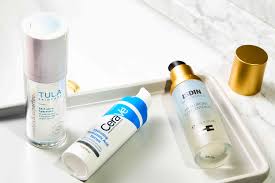
What Is Hyaluronic Acid in Skin Care?
Hyaluronic acid (HA) is a popular ingredient in many skin care products. You can find it in serums, moisturizers, toners, injectable fillers, and even oral supplements.
It is loved for its powerful ability to hydrate and plump the skin.
On product labels, HA is often called sodium hyaluronate. This is the form of HA used because it is more stable and can absorb water better.
Sometimes, you’ll also see the term hyaluronan, which is another name for it.
Doctors, including dermatologists, use HA in different ways. For example, injectable HA fillers add volume to areas like cheeks or lips.
There is also a newer injectable product called SkinVive, designed to hydrate the skin deeply.
But HA isn’t the perfect fit for everyone. Some people may have skin types or conditions that don’t react well to it. It’s important to learn about HA and decide if it suits your skin.
What Does Hyaluronic Acid Do?
HA’s role depends on how it’s used—whether in a serum, cream, supplement, or injection. In skin care products, HA mainly works as a humectant, meaning it attracts and holds water.
HA molecules can hold up to 1,000 times their weight in water. This ability helps keep your skin soft, plump, and hydrated. When your skin has enough water, it looks glowing and healthy.
HA also helps other ingredients in your skin care routine absorb better. It acts like a bridge, carrying nutrients deeper into the skin.
When used as an injectable, HA adds volume under the skin. This reduces wrinkles and fine lines immediately and helps skin look firmer.
What Is Hyaluronic Acid Made Of?
HA is a natural sugar molecule found in many parts of the body, including the skin, joints, eyes, and gums. It’s part of a group called glycosaminoglycans, which are important for the skin’s structure.
The molecules are long chains made from two sugars: D-glucuronic acid and N-acetyl-D-glucosamine. These sugars link together to form a large, flexible molecule that binds water.
The word “hyaluronic” comes from the Greek word hyalos, meaning glass, because of its clear, jelly-like appearance.
How Does HA Help Your Skin?
HA is found in the extracellular matrix—the space between skin cells. This matrix supports the skin’s structure and helps cells communicate.
When your skin has plenty of HA, it stays hydrated and plump. It also helps keep collagen and elastin fibers strong. These fibers give your skin its firmness and elasticity.
With age, the natural amount of HA in your skin decreases. This causes skin to lose volume and develop wrinkles.
Benefits of Hyaluronic Acid in Skin Care
Using HA in your skin care routine offers many benefits:
It hydrates your skin by holding water.
It plumps up fine lines, making wrinkles less visible.
It makes your skin feel firmer and more elastic.
It adds a dewy glow, making your skin look fresh.
It helps other ingredients absorb better.
It provides a soft, jelly-like texture to skin.
Because of these benefits, HA is often called a “miracle moisturizer.”
Types of Hyaluronic Acid Products
HA comes in many forms. Here are the main ones:
Serums:
Lightweight and water-based. They penetrate quickly and hydrate the skin immediately.
Creams:
Thicker and often contain oils and fatty acids. Good for dry skin because they lock in moisture.
Toners and Essences:
Usually lighter than serums. They prep your skin and provide mild hydration.
Injectables:
Used by doctors to add volume or deeply hydrate the skin.
Oral Supplements:
Taken by mouth to support skin, joints, and other tissues from inside.
Which HA Products Are Best for Your Skin Type?
Not every HA product is right for every skin type. For example:
Oily skin: Light serums are better than thick creams to avoid clogging pores.
Dry skin: Creams with HA plus oils help lock in moisture longer.
Sensitive skin: Some HA products can increase irritation when combined with actives like retinoids or Vitamin C, so choose formulas carefully.
Taking a skin type quiz, like the Baumann Skin Type Test, can help you pick the right HA products.
How to Use Hyaluronic Acid in Your Routine
Apply HA on slightly damp skin to help it absorb better. Then follow with a moisturizer to seal in hydration.
HA can boost the effects of other products like Vitamin C or retinol, but it may also increase their side effects, such as irritation or redness.
Use HA in the right step—usually after cleansing and toning, but before heavier creams.
Hyaluronic Acid Moisturizers: Creams vs. Serums
Serums are water-based and quickly absorb, making them ideal for most skin types for hydration.
Creams include oils and fatty acids. These are better for dry skin or dry climates as they form a barrier to trap moisture.
If your skin feels tight or dry after using only a serum, try layering with a cream.
Hyaluronic Acid in Oral Supplements
Oral HA supplements are becoming popular. They may help hydrate skin from the inside, improve skin elasticity, and reduce wrinkles.
Supplements are also used to support joint health by improving lubrication and reducing pain from arthritis.
Oral HA may help keep eyes moist and promote gum health by reducing inflammation and aiding healing.
Always check with a doctor before starting supplements, especially during pregnancy.
Injectable Hyaluronic Acid
Injectable HA fillers are used by doctors to smooth wrinkles and restore volume. Results are often visible immediately and can last many months.
A newer injectable called SkinVive hydrates the skin deeply, improving overall skin texture and firmness.
These treatments require a skilled medical provider to avoid side effects like bruising or lumps.
How Quickly Does Hyaluronic Acid Work?
Topical HA: Effects on skin hydration and plumpness appear within 15 to 30 minutes, especially in humid conditions. However, the effects are temporary and can wear off within hours.
Injectable HA: Some results appear immediately, with full effects visible in 1-3 months.
Supplements: There’s limited research on how long it takes supplements to show skin benefits.
Is Hyaluronic Acid Safe?
HA is generally very safe for most people.
Topical HA: No risk of cancer or allergies. Rated very safe by cosmetic ingredient watchdogs.
Injectable HA: FDA approved and safe when done by trained professionals.
Supplements: Safe when purchased from reputable brands.
Pregnant people can safely use topical HA but should avoid injectable fillers due to added anesthetics. Always consult your doctor about supplements during pregnancy.
Side Effects of Hyaluronic Acid
Side effects are rare but can happen.
Because HA helps other ingredients absorb better, it can increase irritation from strong products like retinoids or acne medications.
If you have sensitive skin, a personalized skin care routine is recommended to avoid these issues.
Does Hyaluronic Acid Reduce Redness or Tighten Skin?
HA itself does not reduce redness or inflammation. It can help other calming ingredients work better by improving absorption.
It can make skin feel tighter and firmer by attracting water and plumping the skin’s surface, but this is a temporary effect.
How Does Hyaluronic Acid Compare to Other Anti-Aging Ingredients?
Vitamin C: Works slowly over months to improve wrinkles and protect skin. HA works fast but effects last only hours.
Retinol: Takes longer but offers longer-lasting wrinkle reduction. HA can boost retinol’s absorption but may increase irritation.
For best results, some skin types benefit from using Vitamin C, retinol, and HA together, but you should build a routine suited for your skin.
What To Look for When Buying Hyaluronic Acid Products
Check the ingredient label for sodium hyaluronate or hyaluronic acid.
Look for products with different sizes of HA molecules—smaller ones penetrate better, larger ones hydrate the surface.
Choose medical-grade products for higher quality and safety.
Read reviews, especially from people with your skin type.
Use products recommended by dermatologists or trusted skin care experts.
Summary
Hyaluronic acid is a natural sugar molecule vital for skin hydration and firmness. It holds water, plumps the skin, and boosts the effects of other skin care ingredients.
It comes in serums, creams, toners, injectables, and supplements, each working differently.
HA works best when chosen for your skin type and used properly in your routine. It is generally safe but can increase irritation when combined with strong actives.
Injectable HA and oral supplements offer deeper, longer-lasting benefits but require professional advice.
If you want personalized advice or product recommendations, consider taking a skin type quiz or consulting a dermatologist. This will help you find the best hyaluronic acid products for your unique skin.
If you want, I can help you build a skin care routine based on your skin type and goals. Just ask!


